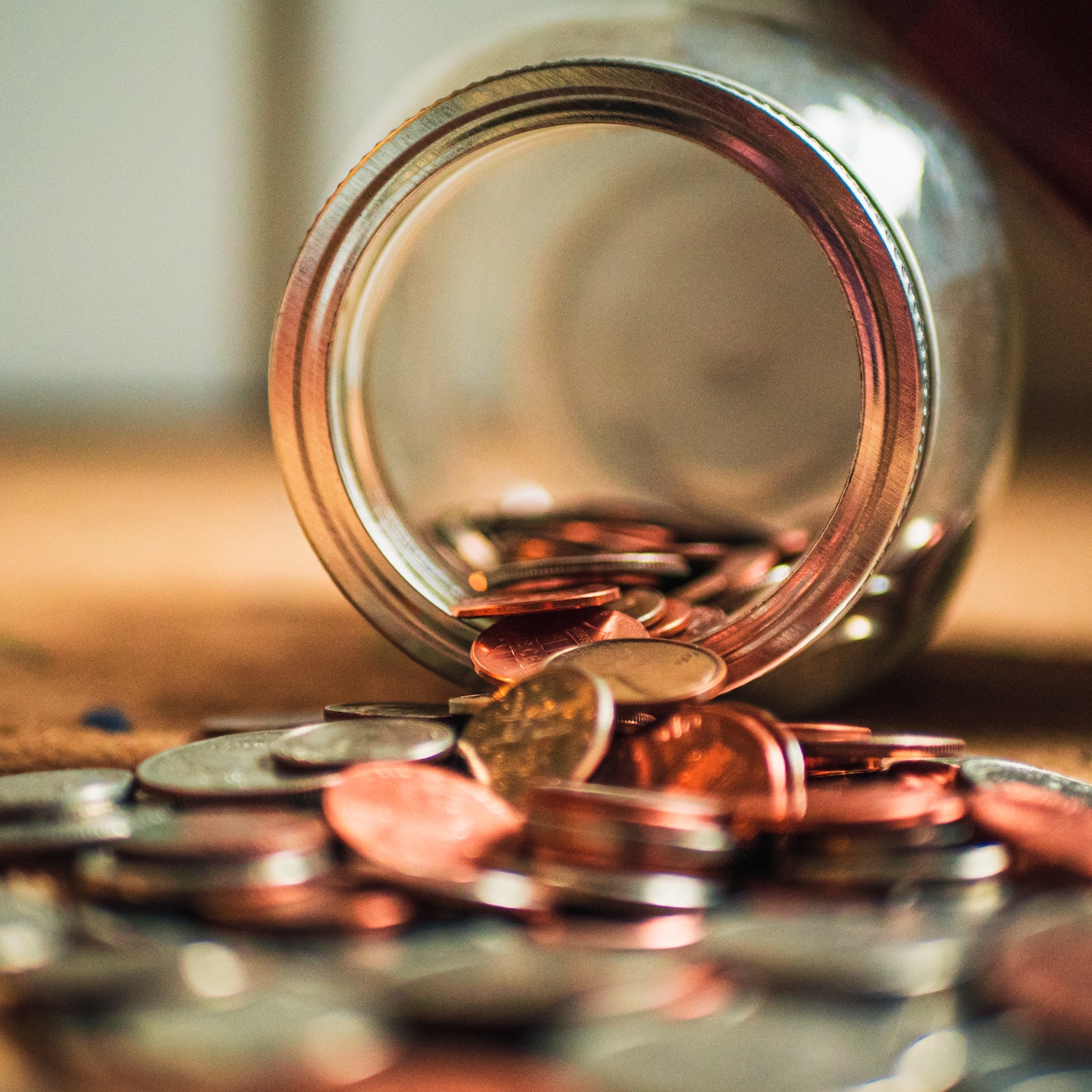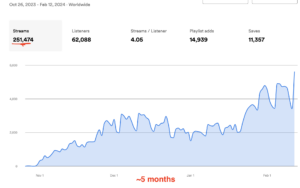How much does Spotify pay per stream? Well, the short answer is within the range of $0.003 to $0.005.
But that’s only the tip of the iceberg. In truth, there are a ton of factors that impact how much artists (and others) are paid.
Today, I’ll look into Spotify’s payment model and clarify how Spotify manages your earnings, how it collects royalties, and how you receive your share.
Is it worth it being on Spotify as an independent artist? Can you make a living from digital streaming platforms?
I’ll answer all these questions in the following paragraphs. Let’s dive in!
How to get your music on Spotify
A study from Media Research shows that Spotify remained the digital streaming platform with the highest total subscribers for the second quarter of 2022, with 30.5% of the market share, followed by Apple Music (13.7%) and Amazon Music (13.3%).
Although still the most popular music streaming service, Spotify’s dominance has partly been eroded by the growth of the Chinese market, where Spotify is not available and local services NetEase Cloud Music and Tencent Music Entertainment (TME) are thriving.
Spotify is available in more than 200 regions worldwide and has 489m users, of which 205m are Premium subscribers. As an artist, having your music on digital streaming platforms is an unmissable opportunity to share your art with the world. But can you pay the rent with your streaming royalties?
Before I jump into the main point, let’s explain how you can get your music available for streaming on Spotify. You can’t upload your songs directly: you’ll need to do it via a distributor that will take care of getting your music to most streaming platforms and online stores and collecting your royalties from all of them.
Here’s a list of the most famous distributors you can look into:
- Distrokid
- CD Baby
- TuneCore
- iGroove
- Ditto
- Amuse
You can find more info about music aggregators in Spotify’s Provider Directory.
How does Spotify pay artists?
Let’s jump right into the most crucial question. When users play your music on Spotify, whether on a Premium plan or the ad-supported Free plan, all rightsholders of the song receive royalties. Then Spotify collects two types of royalties: recording royalties and publishing royalties.
Recording royalties are all those profits paid to the recording or master rights owner, usually paid through the record label or distributor.
Publishing royalties are the ones paid to songwriters and composers, and these royalties are usually delivered to publishers, Performing Rights organizations (PROs), and other collecting societies.
But how do these royalties get to you? What you should be aware of is that Spotify does not pay artists and songwriters directly: it gathers the total revenues and yields around 70% of them to right holders, who then distribute the money according to the agreements they have with each part, which could vary for every artist. These revenues include earnings from both Premium users and advertisements from the Free tier users.
Most of the time, royalties are processed once a month, but it also depends on your deals and agreements with your label or distributors. Spotify doesn’t control how payments are distributed after paying the rights holders.
Like many other streaming platforms, Spotify pays royalties on a streamshare model, not per-stream rate as many might have thought.
How does streamshare work?
To determine your streamshare, Spotify sums up the total streams for a month for each country or region. The total stream is called a “Royalty pool”; think of it as a big cake. Spotify calculates how many of the total streams are yours and estimates your share. There is one royalty pool for each country.
So, to give you an example, if the total streams in Spotify for a specific region is 2,000,000 streams, for which 100,000 are yours, then your streamshare is 5% of the total amount of streams. Your rights holder will receive 5% of that royalty pool, which will then be divided as agreed between you and the right holder.
Spotify does not split the pool on a fixed rate per stream, as users do not pay per stream; premium users pay for access to better features, and advertisements cover the costs of the Free tier. Thus, your portion depends on the royalty pool in each country and the listener’s subscription plan, and the price varies from country to country.
In 2021 alone, the royalty pool was over $7 billion. That income was paid to music rights holders, including the three major record labels and independent labels.
What is the Spotify artist payment model?
Many artists have questioned Spotify’s payment model, claiming they are not receiving enough for their streams. But Spotify believes the streamshare model is the way to maximize music revenues for all right holders. Even though the per-stream rate seems to decrease, Spotify claims that the number of users is increasing and is confident that a better total income appeals more to creators than a higher per-stream rate.
The reasons for these beliefs are three:
Spotify’s users can discover more artists on the platform and become new fans. They’ll then buy merch, tour tickets, and even physical albums from bands and artists they have discovered on Spotify. Artists will be receiving earnings from other sources than just streaming.
Spotify is very popular in countries with lower Premium prices, meaning their per-streams rates will be lower compared to those countries where the Premium monthly fee is above $10. In this case, growing in these regions will grant you a more significant portion of the royalty pool and provide you with a better share than if it was a fixed per-stream rate.
The third and last reason is the Ad-supported tier, which does not generate as much as the Premium tier. Still, if the free service were to disappear, those users would turn to alternative streaming platforms or simply start downloading music illegally, as it was back in the day.
Spotify is confident that its ad-supported service is a means for users to pay for listening to music, as almost 60% of Premium subscribers started with the Free tier plan.
With this model, considerable funds are no longer required for artists to produce, release, and promote their music globally. They can now distribute their music from any country, even those outside the top music markets, and still generate royalties.
How much do 1,000 Spotify streams pay?
The truth is that Spotify keeps these numbers secret and has only disclosed total revenues as they do not support the per-stream model. However, a few distributors have been doing some studies in recent years, using statistics from their clients to bring to light an average of paid-per-stream (PPS) rates for Spotify.
Many artists need to analyze the per-stream rate, to figure an average of how much they could earn on one digital streaming platform instead of another. One of the most detailed studies is the one iGroove conducts each year to find out how much artists get paid per stream, analyzing data from their customers and around 133 countries.
In 2022 iGroove study showed that $0.003 to $0.005 is what Spotify pays per stream on average, meaning 1,000 Spotify streams will pay you $3 to $5. But it depends a lot on which country the streams are coming from. From this research, they found their top PPS countries are Iceland ($6), Switzerland ($5.6), Finland ($5.6), the United Kingdom ($5.5), and Norway ($5.4).
As we’ve mentioned, there’s not an actual per-stream rate, and neither does Spotify seem willing to change its payment model. So, it’s up to other services like iGroove to share their insights on this matter.
Companies like Indie Music Academy and MusicGateway have developed royalties calculators for a quick guide on per-stream rates from different streaming services.
Most distributors generally consider an average of $4 for 1,000 streams. But it’s a number to consider only as a reference, so take it with a pinch of salt.
How do rates vary per country?
The difference in each country’s income is due to the market, and the cost of the monthly subscription varies worldwide to fit each country’s monthly wage. And the income from Premium subscriptions is how Spotify earns money that will be later distributed to rights holders and artists.
Let’s take the example from the iGroove study, where Iceland will generate $6,720.55 per million streams, almost four times what the Dominican Republic generates per million streams ($1,684.36). If we look into each country’s Premium plan rate, we’ll find that in Iceland, Spotify Premium is $10.85 monthly, meanwhile in the Dominican Republic is $5.99. Considering the Premium service’s impact on the royalty pools, these numbers begin to make sense.
Additionally, you’ll realize the number of streams required to top the charts diverges from region to region. The streams needed in Iceland to be on the top charts are not the same necessary to achieve the same result in the Dominican Republic.
In your Audience tab from your Artist page dashboard, you can find the breakdown of your listener by city and country to get a glimpse of where your audience is listening from; this is helpful information when creating campaigns.
Who are the top earning artists on Spotify?
Spotify has never made the artists’ total earnings public, as they claim not to know how rights holders distribute money. However, Spotify shared that in 2021, over 1,000 artists generated over $1 million on the platform, and over 50,000 artists made $10,000 from Spotify alone.
Based on this list of the most streamed artist on Spotify, with streams tracks from each artist profile page, and considering an average of $0.004 per-stream rate, the top 10 earning artists on Spotify would be the following:
- Drake with $199,101,196
- Bad Bunny with $175,102,764
- Ed Sheeran with $151,212,693
- The Weeknd with $137,393,637
- Justin Bieber with $128,793,928
- Taylor Swift with $128,432,368
- Ariana Grande with $128,380,013
- Eminem with $120,764,069
- Post Malone with $118,488,889
- BTS with $112,878,940
There is no need to remind that these numbers are estimated and based on a $0.004 per-stream rate, which is an educated guess.
Spotify vs Apple Music vs Amazon Music
We already know that Spotify’s average per-stream rate is $0.004. But how about its close competitors, Apple Music and Amazon Music?
Apple Music pays 52% to all labels and the same rate for publishers in each country. Like most streaming platforms, Apple Music determines royalties on a streamshare model. But they do have a value for each play: similarly to Spotify, it varies by subscription service, country, and region. Apple claims that the average is $0.01 per stream.
In the case of Amazon, the average rate is very similar to Spotify, with a payment of $0.00402 per stream, a portion of the revenues from Amazon’s subscriptions. As with Apple and Spotify, streaming numbers and subscription plans will affect how much payments will vary each month.
According to the Visual Capitalist infographic, for Apple Music, you’ll need about 136 plays to earn $1, which means the average stream is worth around $0.00735. For Spotify, you’ll need around 229 streams to make $1. And 249 streams to reach $1 in Amazon Music.
With the MusicGateway Streaming Royalties Calculator, you can compare the royalties from different streaming platforms, including the top three platforms plus Tidal, Deezer, and YouTube Music.
Final thoughts
Some artists may not be happy with how streaming services have taken over the music industry, but we can’t deny it has changed how listeners consume and discover music. Streaming platforms have stopped people from illegally downloading music and instead made them pay a fee for a streaming service which in the end helps artists with a new source of income.
As an artist, you should be on as many streaming platforms as possible, or at least the top three: Spotify, Apple Music, and Amazon Music. Releasing singles often can help you keep your audience engaged and maintain a regular flow of royalties coming your way.
You won’t get rich with Spotify’s streams, but it can become a stable source of income and the best way to get your music out there.









